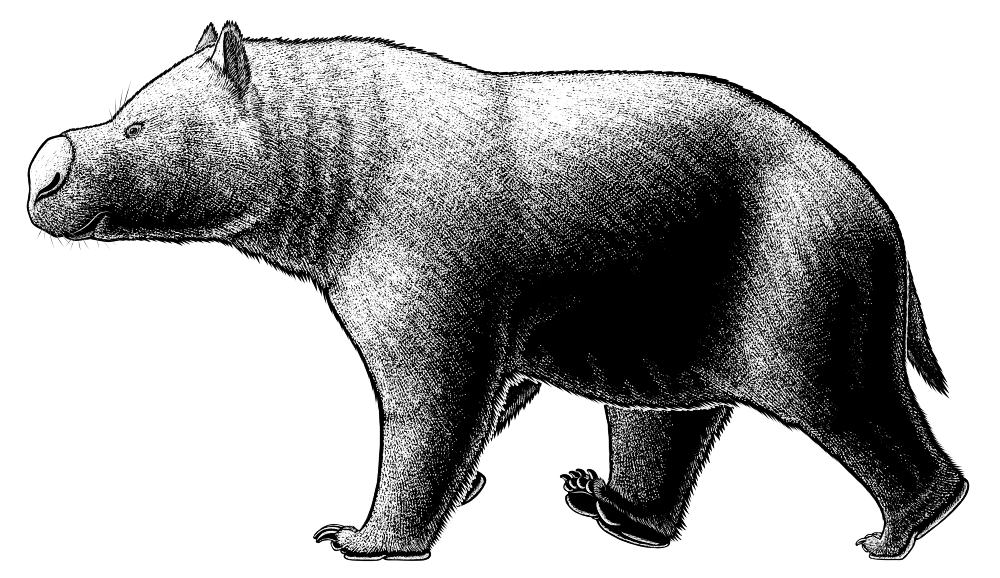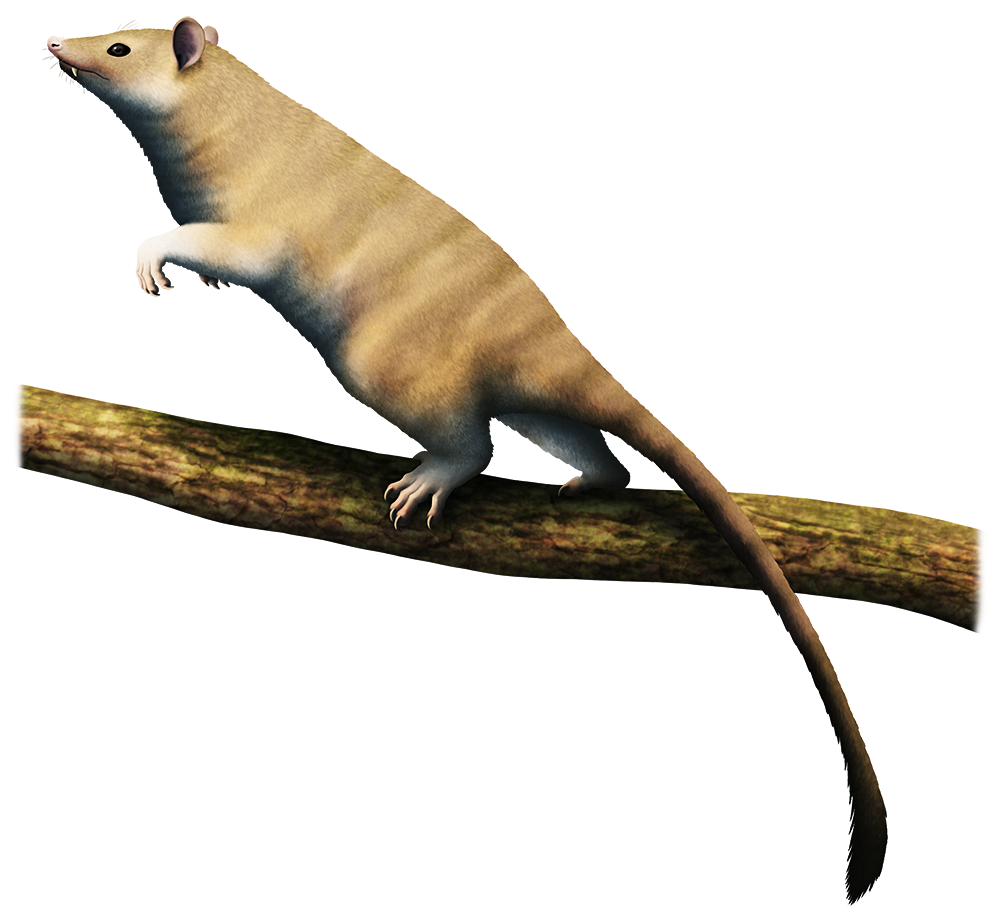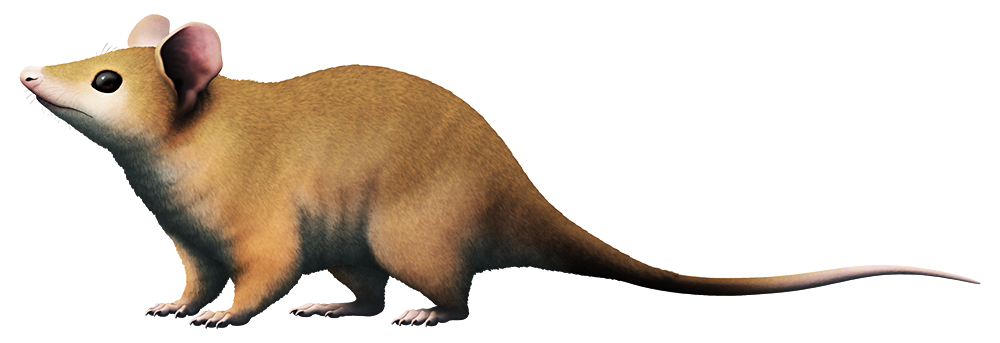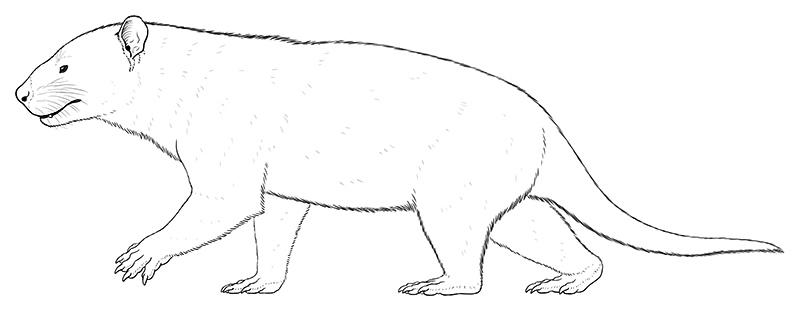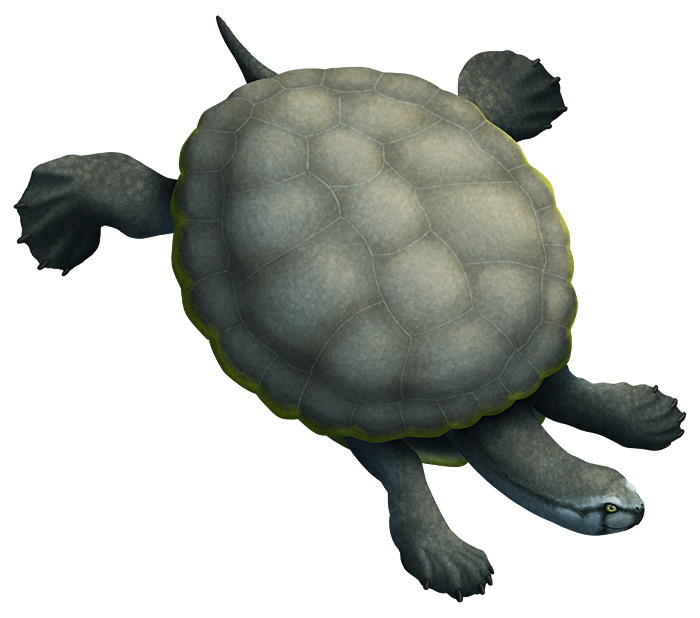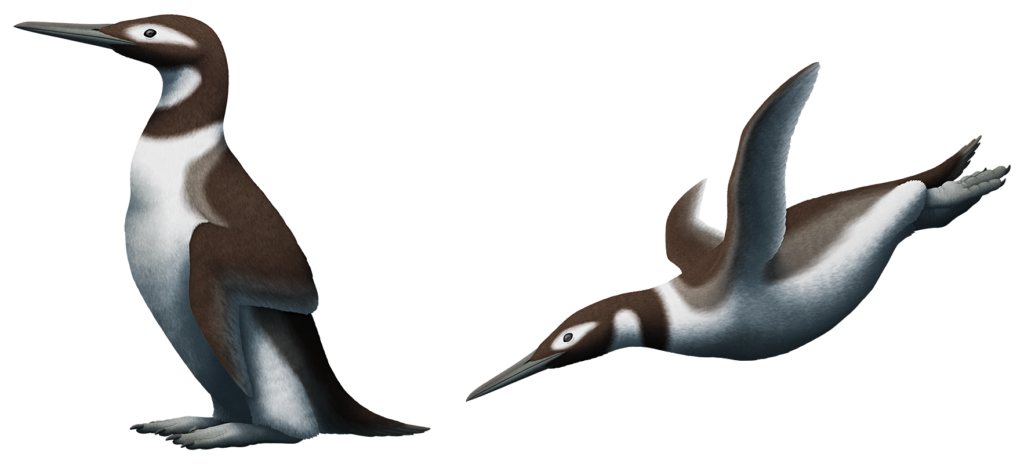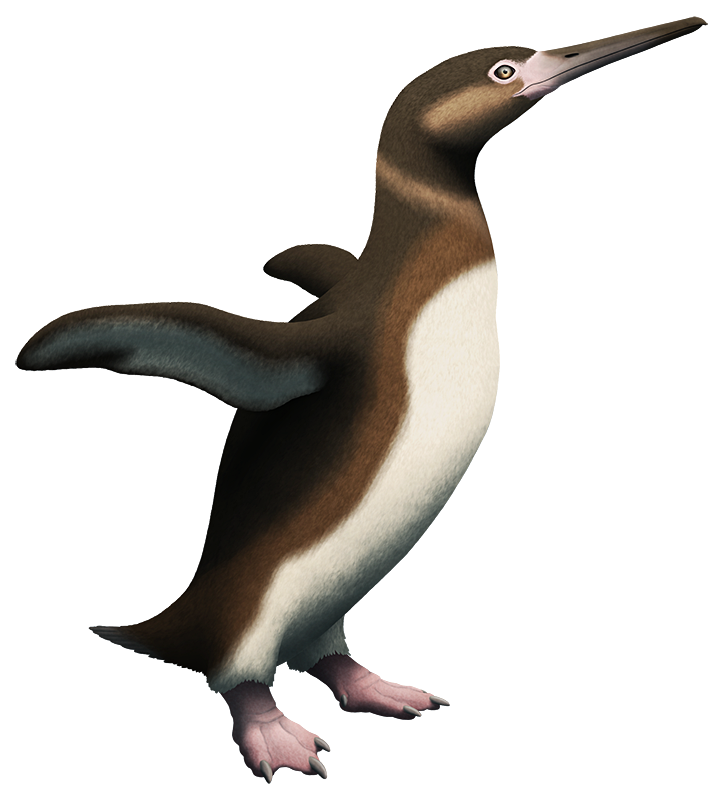Diprotodontids were large herbivorous marsupials distantly related to modern wombats and koalas, with some species reaching body sizes comparable to rhinos.
Ambulator keanei here was a mid-sized example, closer to bear-sized at around 1m tall at the shoulder (~3’3″). It lived in South Australia during the Pliocene, about 3.9-3.6 million years ago, at a time when the climate was becoming drier and the local habitat was shifting towards open grasslands – and so it was was one of the first diprotodontids known to have specialized its limb anatomy for more efficient long-distance walking.
A bone in its wrist was modified into a heel-like structure, and skin impressions show large cushioning fleshy pads on the undersides of its feet. Its feet were also rotated to bear weight mainly on the outside edges, similar to the condition seen in some ground sloths, and its fingers and toes appear to have been held raised up off the ground while walking.

